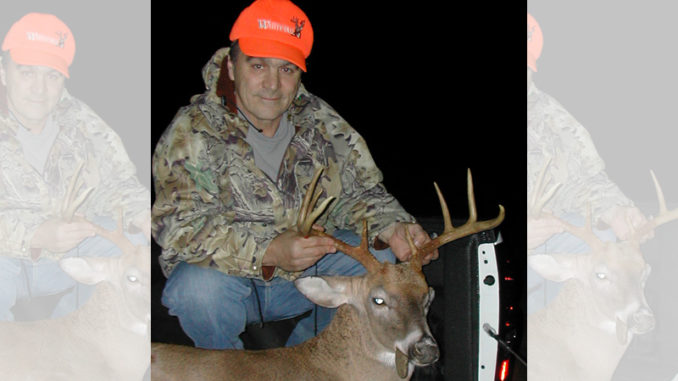
Finding your deer is just as important as shooting it
Every season, numerous deer hunters have feelings of euphoria when they shoot a deer, only to feel the pangs of failure when the deer runs off and can’t be found. This is especially true when someone shoots his or her first deer and it runs away. They expected the deer to fall on the spot. When it didn’t, they didn’t have a clue as to how to track and find it.
Rufus Morgan of Springfield, S. C., is a master at tracking. A number of years ago, hunter John Rheney of Orangeburg shot a deer in the last few minutes of daylight. He called for help, and by the time Morgan arrived, it was pitch-black dark.
Rheney had managed to find three drops of blood where the deer was standing when he shot. Morgan dropped to his hands and knees with a bright flashlight. He tore into three scraps a piece of paper he had in his pocket and laid them at each spot of blood. beside the blood. By lining up the three scraps of paper, he determined the direction the deer had gone when it left.
Follow the paper trail
Still on his hands and knees, Morgan crawled in that direction, slowly sweeping the light from side to side. Each time he found a new drop of blood, he marked it with another scrap of paper. This went on for roughly 60 yards until the blood trail petered out.
After extended searching, no more blood could be found. Morgan retreated to his last three scraps of paper to establish a line of travel. While staying put, he sent other hunters to a spot in the direction his paper trail pointed. And when they found blood on some tall grass, the tracking continued.
The trail began to weave dramatically through the planted pines. Montgomery continued to scour the ground for more spots of blood. He tasked one helper with shining his light up ahead.
Eventually, the light was reflected by a a pair of eyes belonging to the 6-point buck Rheney had shot.
What are some of Morgan’s tips for trailing a wounded deer?
• Mark where the deer stood when you shot.
• Use a compass to get a line of travel from your position to where the deer stood. If you are 20 feet up on a stand, your line of sight is different from what you can see on the ground. A compass reading can aim you as to where you want to go.
• Where did you last see your deer? Use your compass to direct you to this spot.
• Look for blood, and mark each spot with a scrap of paper.
• In addition to blood, check for tracks or overturned leaves.
• Be conscious of blood on trees and tall grass. Blood squirting out the side of a deer sometimes won’t reach the ground.
• If you lose the blood trail, look back at previous paper markings to get the direction of travel. If this fails, start making circles at your last known sign.
• Listen for alarm cries from birds, and animals such as blue jays and crows. Squirrels will often bark at a downed deer.
What’s in your deer hunting pack? Click here to find out what should be.



Be the first to comment